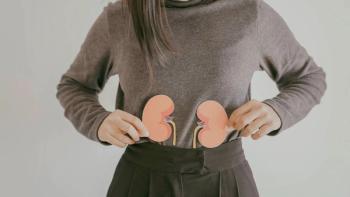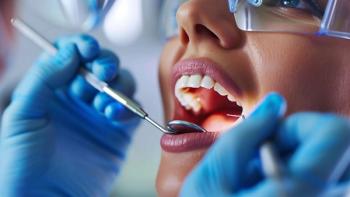
Vaccine Shows Benefit in Early-Stage Breast Cancer
Brian J. Czerniecki, M.D., Ph.D., discusses a promising vaccine for certain patients with breast cancer.
A randomized selection trial showed that there is another anti-HER2 DC1 vaccination that is a safe and immunogenic treatment to induce tumor-specific T-cell responses for patients who have HER2-positive breast cancer.
The pathologic complete response (pCR) rate was higher in patients with ductal carcinoma in situ (DCIS) compared with patients with invasive breast cancer (28.6 percent vs 8.3 percent). Patients with DCIS who achieved a pCR (12 patients) and who did not achieve a pCR (30 patients) had similar peripheral blood anti-HER2 immune responses.
“In this study, we compared where we injected them, and it didn’t seem to make any difference as far as either inducing an immune response or causing regression of the tumors,” said lead study author Brian J. Czerniecki, M.D., Ph.D.
Can you begin by describing the vaccine and the trial in which it was tested?
In an interview with CURE, Czerniecki, chair, Department of Breast Oncology, Moffitt Cancer Center, discussed the significant findings of this trial and the importance of developing cancer vaccines.It’s a dendritic cell vaccine, which means it’s made from the patient’s own immune-stimulating white cells. Most vaccines, when they’re administered off the shelf, contain a lot of things to stimulate this particular cell to take up and activate the immune response, so we actually directly take those cells out of the patient’s blood, activate them out of their body away from the influence of cancer, and then inject them back into the body. What we feed them is little bits of this HER2 protein, so that’s why it was targeting HER2.
The patients in this study happened to be patients with early breast cancer, meaning either early stage 1 or DCIS. Those are the patients who were targeted in this trial, but we also have trials where we administer the same vaccine for patients who have invasive HER2 breast cancer who are at risk for recurrence. In other words, they’ve been treated with all the standard stuff, and they’re still at risk for recurrence. We’re vaccinating them to try to prevent recurrence as well.
Were there any noteworthy toxicities associated with the vaccine?
Did there appear to be any differences in the results depending on the site of injection?
This particular study, though, included those treated with DCIS and early-stage breast cancer. We treated them with the vaccine before the patients went on to surgery, and in about 29 percent of them, the tumor actually disappeared before they went to surgery—if they had DCIS. This was not the case for patients with invasive cancer. And that’s been known for years, that cancer vaccines aren’t all that effective when someone has an active tumor to try to treat it. So that wasn’t necessarily surprising. I think the earlier people have the disease, or if you treat them in a setting where there’s minimal disease — in other words, where they’ve been completely treated and they’re at risk for recurrence — that’s the setting where vaccines likely work best.The toxicities were pretty minor—mostly grade 1 or 2. Patients experience some soreness from the needle poke, some get some fatigue or fever for a couple hours, but very limited side effects overall. No. In this study, we compared where we injected them, and it didn’t seem to make any difference as far as either inducing an immune response or causing regression of the tumors. It worked whether we gave it in the breast in the area where the DCIS was, or if we gave it in their lymph nodes.
The immune response was a little bit stronger if people got it directly into the lymph node, but it wasn’t statistically significant. You’re getting all the cells directly to where they need to interact with the immune cells in the lymph node, so it would potentially be a little stronger there.
Are there any next steps planned following the results of this study?
The advantage of injecting into the breast is that you’re putting the activated cells in the region where the problem is, so those cells might migrate to the sentinel nodes. In fact, the people who responded — meaning they didn’t have any disease left — had the strongest immune response in their sentinel nodes, compared with the patients who didn’t completely respond. That suggests that you have to not only activate the immune cells, which they all picked up in their peripheral blood, but you have to get them into the region where the tumor is.We have two different trials planned. One is going to be a phase 3 trial for patients with DCIS, who will be randomized to best treatment, like lumpectomy and radiation versus lumpectomy with this vaccine. The other trial involves patients with a high risk of having their HER2-positive disease come back.
Are there any other related studies in this space that you'd like to touch upon?
We’re actually performing a phase 2 trial comparing two vaccines. Once people finish all their surgery and chemotherapy and everything, if they’re still at high risk, they’re going to get these vaccines to try to prevent recurrence. That one will be starting in Moffitt probably in the spring. Moffitt will be the only place in Florida where patients can get this vaccine.There was one study done in an adjuvant setting, involving a simpler component of one of the peptides that we used in the vaccine. It was deemed not to be effective, but that was actually in patients with a lower expression of the HER2 protein.
There is another vaccine that’s going to be compared with this one in a study funded by the Department of Defense at the University of Washington. That’s a DNA vaccine, so it’s made from nucleotides, and it expresses HER2 and a couple of other proteins. Ours is made individually from the patient from their own white cells; we just take little bits of the HER2 protein and feed it to them.
We expect that they’ll both be effective. The nice thing about our vaccine is that it’s made individually for the patient, and it’s all-natural. The other one is more off-the-shelf and may not work for everyone. And we don’t know in the setting of, if patients have disease, will it be effective?
The idea here is to develop these vaccines eventually for breast cancer prevention, to give it to people who may be at risk, before they develop the cancer. But right now, we’re testing it to see if it’s even effective, in secondary prevention, to prevent recurrence.




